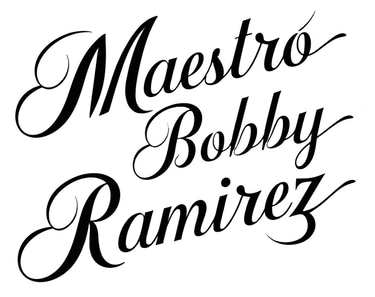
From Scales to Solos: Building Daily Practice Routines That Work
A step-by-step guide for developing balanced and engaging practice habits.
Maestro Bobby Ramirez
10/13/20254 min read



From Scales to Solos: Building Daily Practice Routines That Work
A step-by-step guide for developing balanced and engaging practice habits.
Great players don’t just practice more—they practice better. A smart routine moves you from warm-ups to real music efficiently, keeps your brain engaged, and shows clear progress week to week. Here’s a practical, musician-tested plan you can start today.
Step 1: Define your North Star (5 minutes)
Pick one 90-day outcome (e.g., “clean 16th-note articulation at 120 bpm,” “memorize 3 concert pieces,” “improvise over ii–V–I in 12 keys”).
Set weekly checkpoints: one technical, one musical (expression/phrasing), one creative (improv/composition).
Step 2: Design your time box
Choose a daily duration you can keep for at least four weeks:
30 minutes (busy days)
45 minutes (steady growth)
60–90 minutes (accelerated progress)
Commit to a minimum viable session (MVS) you’ll do even on tough days—e.g., 12 minutes: 3 warm-up + 6 technique + 3 music.
Step 3: Build the daily template
Use this backbone and adjust the minutes to fit your total time.
Warm-Up & Sound (10–20%)
Long tones / open strings / free strokes; slow breaths or bow releases; easy scales at pp–ff; focus on evenness and resonance.Technique Circuit (30–40%)
Scales & Arpeggios: one key family per day (major, relative minor, modes).
Pattern of the Week: e.g., 1–2–3–4, 1–3–2–4 permutations, bowing or tonguing patterns.
Articulation/Coordination: staccato vs. legato, double-tongue or spiccato, shifting, finger independence.
Tempo Ladder: 2–3 bpm steps using a metronome; stop at first inconsistency.
Core Repertoire (30–40%)
Isolate hardest bars first (“no-frills loop” 5–7 reps), then reintegrate into phrases.
Use contrast reps: one expressive, one technically strict.
End with performance runs (record yourself).
Creative Lab (10–20%)
Improvisation: drone or backing track; limit notes (pentatonic, chord tones).
Ear Training: sing/play guide tones, transcribe 2 bars by ear.
Sight-Reading: one short etude daily.
Cool-Down & Notes (3–5 minutes)
Slow, relaxed scales; stretch.
Log: what improved, what to fix tomorrow.
Step 4: Rotate for balance (weekly plan)
Mon/Thu: Facility (speed, articulation), bright keys.
Tue/Fri: Tone, phrasing, dark keys.
Wed: Rhythm lab (subdivisions, odd meters, swing feel).
Sat: Creativity & repertoire polish (mock performance).
Sun: Light review or full rest (listen, score study).
Step 5: Use the 3×3 Progress System
Each week, pick:
3 micro-skills (e.g., clean shift to 5th position, D major scale in 3rds, swing articulation on upbeats).
3 problem spots (measure numbers).
3 musical intentions (e.g., “long line through bar 12,” “lighter accents,” “warm core tone”).
Reassess every Sunday. If a goal stalls for two weeks, shrink the task (slower tempo, smaller excerpt, fewer notes).
Step 6: Make the metronome your coach (not your jailer)
Start under tempo where you never miss.
Climb a tempo staircase: +2 bpm after two flawless reps; if you miss twice, step down.
Try gap clicks (metronome on 2 & 4, then 1 only) to test internal time.
Step 7: Upgrade with deliberate constraints
Note limits: improv with only 3 notes; repertoire phrase with only slurs; left-hand pizz only; breath/bow limits.
Rhythm focus: play lines as all triplets, then straight 8ths; accent every 3rd note over 4/4.
Constraints sharpen control and keep practice fun.
Step 8: Track, reflect, and celebrate small wins
Keep a practice log with date, minutes, tempos achieved, and 1–2 sentence reflections.
Record weekly snapshots (same exercise, same mic distance) to hear real progress.
Share one accountability check-in with a teacher or practice buddy.
Sample Routines
30-Minute Day
3′ Warm-up tone + breathing/bowing
10′ Technique ladder (one key + one pattern)
12′ Repertoire problem spots → phrase runs
5′ Creative lab (improv over I–vi–IV–V) + log
45-Minute Day
5′ Warm-up tone & flexibility
15′ Technique circuit (scales in 3rds, articulation)
20′ Repertoire (slow → performance tempo)
5′ Ear training (sing guide tones) + log
60-Minute Day
8′ Warm-up & resonance
20′ Technique (two keys, tempo staircase)
25′ Repertoire (isolate → integrate → run-through)
7′ Creative lab (transcribe 2 bars, improv)
Bonus: 2′ cool-down & notes
Troubleshooting Guide
“I’m bored.” Rotate constraints; switch keys daily; shorten reps and add micro-goals.
“I don’t see progress.” Lower tempo; define success as control, not speed; record before/after.
“I run out of time.” Do your MVS. Hit one scale, one bar, one creative exercise. Done.
“Performances feel shaky.” Add mock performances 2–3x/week; practice starting cold; simulate stage conditions.
“Tone collapses at speed.” Alternate fast reps with slow-motion form reps to preserve mechanics.
Practice Tools Checklist
Metronome • Drone/tuner • Timer • Pencil for markings • Recorder/phone • Backing tracks • Staff paper/DAW • Comfortable chair/stand • Hydration
Monthly Reset (15 minutes)
Review your log and recordings.
Keep the 20% of exercises that produced 80% of results.
Set one new creative challenge (e.g., arrange a chorus, write an 8-bar melody, learn a solo by ear).
Schedule a share moment (studio class, open mic, social post, or family mini-recital).
Bottom line: A routine that balances technique, music, and creativity will move you from scales to confident solos—consistently and enjoyably.
#Hashtags: #DailyPractice #MusicPractice #PracticeRoutine #MusicianLife #ScalesToSolos #Technique #EarTraining #Improvisation #Metronome #Repertoire #JazzEducation #ClassicalMusic #WindPlayers #StringPlayers #Percussion #Brass #PracticeHacks #PerformanceTips #MusicStudents #MaestroBobbyRamirez
Study flute with Maestro Bobby Ramírez CLICK HERE




Maestro Bobby Ramirez
Thanks be to GOD THE FATHER for my Talent - I AM
Contact form
© 2025 Maestro Bobby Ramirez. All rights reserved.
About
Music
Videos
Blog
Shop
Education
Reviews
News












